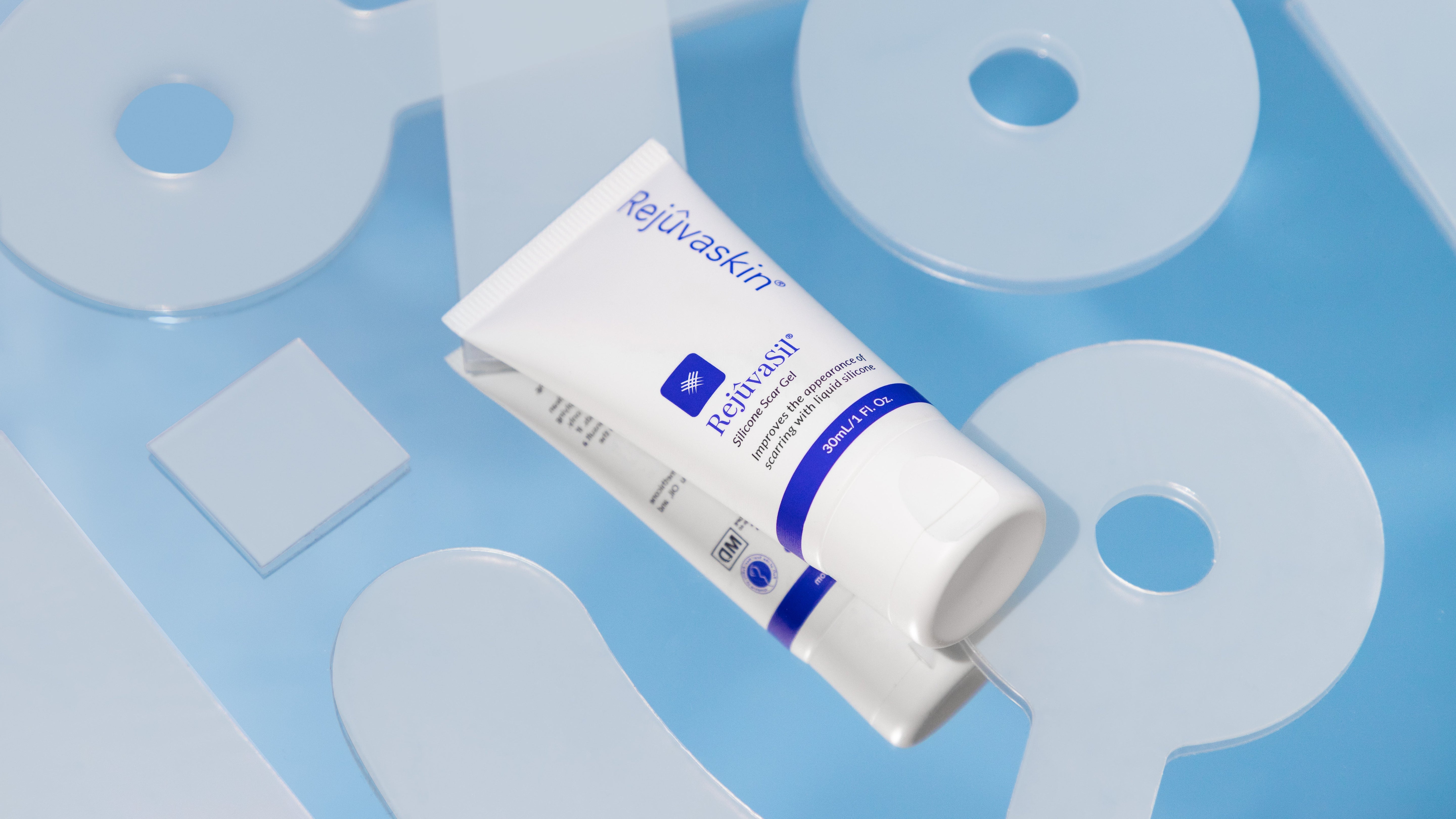At Rejuvaskin, we know that silicone is the gold standard for scar healing. However, many people struggle with choosing between silicone scar gel and silicone scar sheets. So, which one should you use?
Whether you're dealing with new wounds or older scars, the synergy between silicone scar gel and silicone scar sheets can be a game-changer for your scar treatment routine. Let’s learn why alternating between these two products is the most effective way to manage your scars.
The Benefits of Silicone Scar Gel and Silicone Scar Sheets
First, let’s take a look at these 2 forms of silicone individually.
Silicone Scar Sheets: Silicone scar sheets provide a protective barrier that shields fresh scars from external factors and helps keep moisture within the healing scar site, while also applying gentle pressure to help flatten and soften the scar tissue over time. This makes them particularly beneficial for fresh scars and during the night when your skin is less active (O’Brien & Jones, 2006).
Silicone Scar Gel: Silicone scar gel, on the other hand, is easy to apply and suitable for scars of various sizes and shapes. It offers a convenient, hassle-free way to incorporate silicone into your scar care routine, making it ideal for daytime use when your skin moves more (Mustoe, 2007).
So Why Not Wear Silicone Sheeting All Day?
One of the most important parts of the scar treatment process is to keep it within an ideal healing environment as much as you can (aka clean, moisturized, & protected). With silicone sheeting being the better-known, more popular choice of silicone products, it would therefore make sense to simply wear your sheeting as much as you can, right?
Well, there’s a few drawbacks to this concept.
While some doctors and brands suggest wearing silicone sheeting for 24 hours straight, Rejuvaskin recommends a different approach. Prolonged use of silicone sheeting can lead to skin irritation, rashes, folliculitis, and weakened skin due to the occlusive nature of the sheets, which traps moisture and heat against the skin.
Instead, we propose alternating between silicone scar sheets at night and silicone scar gel during the day. This method not only maximizes the benefits of each product but also gives your skin a chance to breathe, reducing the risk of irritation.
How To Use Silicone Scar Products Together
Using both silicone scar sheets and silicone scar gel in your routine is straightforward and highly effective— which is why we combined both products into our Rejuvaskin Scar Heal Kits, allowing you to stick to a simple scar regimen:
- ☀️ Apply Silicone Scar Gel During the Day: Clean your scar and apply a small amount of silicone scar gel. Massage it in until it’s absorbed. Repeat this process twice daily for best results.
- 💤 Apply a Silicone Scar Sheet at Night: Cut the silicone scar sheet to fit your scar, apply it to clean, dry skin, and leave it on overnight. This ensures that the sheet stays in place while you sleep and continues to exert gentle pressure on the scar.
- 🔁 Alternate and Repeat: Consistency is key. By following this routine daily, you’ll create an optimal healing environment for your scars, utilizing the unique benefits of both products.
How Does Silicone Create The Ideal Healing Environment?
Silicone creates an occlusive barrier that locks in moisture, preventing excessive water loss from the skin. This hydration is critical for proper healing and restructuring of scar tissue, reducing collagen overproduction, which can lead to raised and textured scars (Tandara & Mustoe, 2008). By maintaining a balanced moisture level, silicone helps scars heal flat and smooth.
The Rejuvaskin Scar Heal Kit: Your Best Solution
Our Rejuvaskin Scar Heal Kit combines Scar Fx Silicone Sheeting and RejuvaSil Silicone Scar Gel, offering a comprehensive approach to scar management. This combination leverages the strengths of both products, ensuring you receive the best care for your scars.
- Scar Fx Silicone Sheeting: Clinically proven to reduce the appearance of scars by maintaining skin hydration and protecting against bacteria.
- RejuvaSil Silicone Scar Gel: Formulated with liquid silicone, Vitamin C, Squalane, and Emu Oil to soften and flatten raised scars while reducing discomfort.
By using these products together, you can maximize the effectiveness of your scar treatment routine.
Conclusion
Combining silicone scar sheets and silicone scar gel offers a balanced, effective approach to scar management. By alternating these products, you provide your skin with the best environment for healing. Check out our Rejuvaskin Scar Heal Kit today for a comprehensive scar treatment solution.
Resources
- Mustoe, T. A. (2007). Evolution of Silicone Therapy and Mechanism of Action in Scar Management. Aesthetic Plastic Surgery, 32, 82-92. https://www.semanticscholar.org/paper/Evolution-of-Silicone-Therapy-and-Mechanism-of-in-Thomas-A.-Mustoe/a97508b7cd7561466a89d24fcb91bb329dd138a4
- O’Brien, L., & Jones, D. J. (2006). Silicone gel sheeting for preventing and treating hypertrophic and keloid scars. The Cochrane Database of Systematic Reviews, 9, CD003826. https://www.cochranelibrary.com/cdsr/doi/10.1002/14651858.CD003826.pub3/full
- Tandara, A., & Mustoe, T. A. (2008). The role of the epidermis in the control of scarring: evidence for mechanism of action for silicone gel. Journal of Plastic, Reconstructive & Aesthetic Surgery, 61(10), 1219-1225. https://pubmed.ncbi.nlm.nih.gov/18653391/
- Katz, B. (1995). Silicone gel sheeting in scar therapy. Cutis, 56(1), 65-7. https://consensus.app/papers/silicone-sheeting-scar-therapy-katz/0359610d6f7251059973136867585a4e/?utm_source=chatgpt
- Ito, Y., Konishi, A., Okubo, M., Sato, T., Hasegawa, A., Yabuzaki, K., ... & Okamoto, A. (2021). Safety assessment of the prophylactic use of silicone gel sheets (Lady Care®) for the prevention of hypertrophic scars following caesarean section. Journal of Obstetrics and Gynaecology, 41(3), 380-384. https://www.tandfonline.com/doi/full/10.1080/01443615.2020.1852540
- Ahn, S., Monafo, W., & Mustoe, T. A. (1989). Topical silicone gel: a new treatment for hypertrophic scars. Surgery, 106(4), 781-786. https://pubmed.ncbi.nlm.nih.gov/2529659/





















Leave a comment